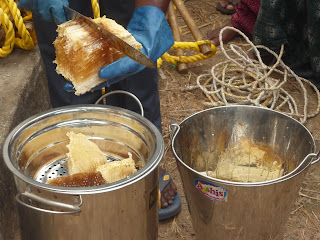It’s been a little over a month since JC and I returned from India and I’ve found it immensely difficult to explain the fullness of the experience. Everyone asks ‘so how was India?’ and there is no simple answer. I respond ‘it was great’ and explain a little about the work we did, but I always feel there are pieces missing from my description. There is something so profoundly indescribable about being welcomed into a community or invited to share a special moment. Words are simply not enough.
But where words fall short, connection prevails. I really underestimated how much society relies on language to communicate. It was very isolating being unable to speak Tamil. I felt uncomfortable pronouncing words or rude asking those who spoke English to speak slowly. I realized, however, that more can be expressed in a gesture or a kind glance than in words alone. It became most important for me to understand the customs of Padavedu and the cultural meaning of social interactions. I didn’t need to speak Tamil to observe and reflect on how relationships are built. I will be a better social worker because I understand, with new meaning, the importance of connection.
This was my first experience in another country for a significant amount of time. For me, it was an opportunity to challenge myself in a completely foreign context. I wanted to understand my role as an outside ‘helping professional.’ I wanted to share my experiences and understanding of social work with others. I wanted to experience life in another country. As a social worker most of us will work with communities outside our own. It is our duty to understand our role, especially as it relates to power and privilege, and to find our niche as agents of social change.
Although I’d acknowledged my privilege as a US-born citizen, I understand my position in relation to the world with a new lens. My understanding of needs and resources was limited to an American framework. I cannot dismiss the reality of global poverty as I used to. Armed with a new understanding I feel compelled to act. I must acknowledge the effect of my actions as a social worker, as a women, as a consumer and as an American on people across the globe.
Even now, as I reflect on the experience, I feel driven by emotion, not language. I sense an acute change in my interactions with others. It’s such a nuanced difference but has immense power in developing a helping relationship. I feel grateful to CUSSW for creating this opportunity and honored to have been welcomed by SST and Chairman Joshi. As a final word I would like to deeply thank those who shared their lives with us. I appreciate your willingness to welcome us and am grateful for having met each of you.




















